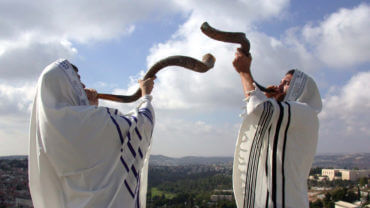Did Rivkah Really Get Married At Three Years Old?
Hey JITC-
Rivka got engaged at three years old? How are we supposed to understand this?
Best,
Emily
Dear Emily-
Thanks for your question. I’m gratified that you said “engaged” rather than married because that’s a huge difference.
The idea that Rivka was three is not the only opinion but it’s been popularized because it’s the one cited by Rashi on Genesis 25:20, and everyone learns Rashi. It’s based on calculations that make a number of assumptions, including that Yitzchak was 37 at the time of the akeidah – which is in turn based on the assumption that Sarah died during the akeidah – and that Rivka was born at the same time. None of this is explicit in the text. They are all midrashim and they all have to be literal history to yield the result that Rivka was three. There are other opinions, such as that Yitzchak was 13 at the akeidah (see ibn Ezra 22:4), which will yield very different results.
Even according to the most literal understanding of all this, that doesn’t mean that Yitzchak consummated the marriage at that time. Rashi on 25:26, based on Pirkei d’Rabbi Eliezer, suggests that they waited ten years, at which point she would have reached the age of majority.
But, as noted, all of this is based on midrashim and midrashim can be tricky things. Rabbeinu Avraham ben HaRambam explains in detail how some midrashim (and aggados) are intended literally, while others are intended for other purposes, such as to impart moral lessons. We don’t always know which are which. Reading every midrash as literal would not only be improper, it would be foolish when one considers that many midrashim contradict one another! For example, one midrash says that Iyov (Job) was an advisor to Pharaoh, while another says he was a fictional character in a parable written by Moshe. You can’t have it both ways.
Most of us learn midrashim as children. They capture our interest and shed light on the text of Chumash. All too often, however, we fail to revisit them as adults and to consider what deeper messages they might be trying to convey.
For example, I don’t believe that the arm of Pharaoh’s daughter magically stretched like that of Plastic Man in order to retrieve the basket containing baby Moshe. To me, that appears to be a message that if we attempt to perform a task that seems beyond us, God will offer us assistance.
I also don’t believe that we cover challah on Shabbos because bread is capable of being embarrassed. That’s clearly a homiletical interpretation of the halacha, designed to impart the moral lesson that, if we’re concerned with the “feelings” of inanimate objects, how much more careful we must be not to shame one another.
So what lesson do I derive from the assertion that Rivka was three? “Three years old” is an age with very specific halachic ramifications throughout the Talmud. A girl who was converted, freed from captivity or redeemed from indentured servitude until the age of three, is like she was never non-Jewish, taken captive or indentured at all. The midrash discusses the depravity of Rivka’s homeland. By saying that she was three years old when she married Yitzchak, it employs recognizable halachic terminology to convey that she was unsullied by the environment of her birth.
As noted, midrashim can and do contradict. The Sifri says that Rivka was 14 when she married Yitzchak. This is the position accepted by the Seder Olam, whose entire raison d’etre is to create a chronology of events. Sure, 14 is still pretty young by our standards but I think we can not be appalled if that was a marriageable age 4,000 years ago. Since we can’t take both midrashim literally, I choose to believe that this opinion more closely represents the literal history of things.
Sincerely,
Rabbi Jack Abramowitz
JITC Educational Correspondent
If you found this content meaningful and want to help further our mission through our Keter, Makom, and Tikun branches, please consider becoming a Change Maker today.







